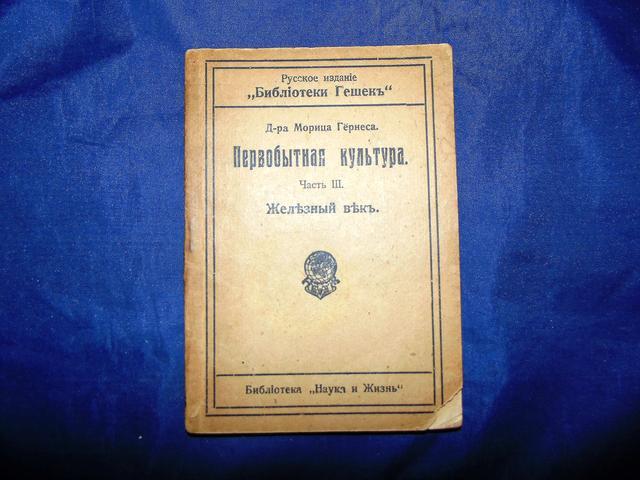
Iron Age - Part 3
Content
The latest issue about the number one metal of our civilization and its relationships. The experiments carried out so far have shown that this is an interesting object for research in the home laboratory. Today's experiments will be no less interesting and will allow you to take a different look at some aspects of chemistry.
One of the experiments in the first part of the article was the oxidation of a greenish precipitate of iron (II) hydroxide to brown iron (III) hydroxide with a solution of H2O2. Hydrogen peroxide decomposes under the influence of many factors, including iron compounds (oxygen bubbles were found in the experiment). You will use this effect to show...
… How a catalyst works
of course speeds up the reaction, but - it is worth remembering - only one that can occur under given conditions (although sometimes very slowly, even imperceptibly). True, there is an assertion that the catalyst accelerates the reaction, but does not take part in it itself. Hmm... why is it added at all? Chemistry is not magic (sometimes it seems so to me, and "black" to boot), and with a simple experiment, you will see the catalyst in action.
First prepare your position. You will need a tray to keep the table from flooding, protective gloves, and goggles or a visor. You are dealing with a caustic reagent: perhydrol (30% hydrogen peroxide solution H2O2) and iron (III) chloride solution FeCl3. Act wisely, especially take care of your eyes: the skin of the hands burned with pehydrol regenerates, but the eyes do not. (1)
2. The evaporator on the left contains only water, on the right - water with the addition of perhydrol. You pour a solution of iron (III) chloride into both
3. The course of the reaction, after its completion, the catalyst is regenerated
Pour into a porcelain evaporator and add twice as much water (the reaction also takes place with hydrogen peroxide, but in the case of a 3% solution, the effect is hardly noticeable). You received approximately 10% solution of H2O2 (commercial perhydrol diluted 1:2 with water). Pour enough water into the second evaporator so that each vessel has the same amount of liquid (this will be your frame of reference). Now add 1-2 cm to both steamers.3 10% FeCl solution3 and carefully observe the progress of the test (2).
In the control evaporator, the liquid has a yellowish color due to hydrated Fe ions.3+. On the other hand, a lot of things happen in a vessel with hydrogen peroxide: the contents turn brown, the gas is released intensively, and the liquid in the evaporator becomes very hot or even boils. The end of the reaction is marked by the cessation of gas evolution and a change in the color of the contents to yellow, as in the control system (3). You were just a witness catalytic converter operation, but do you know what changes have occurred in the vessel?
The brown color comes from the ferrous compounds that form as a result of the reaction:
The gas that is intensively ejected from the evaporator is, of course, oxygen (you can check whether a glowing flame starts to burn above the surface of the liquid). In the next step, the oxygen released in the above reaction oxidizes the Fe cations.2+:
Regenerated Fe ions3+ they again take part in the first reaction. The process ends when all the hydrogen peroxide has been used up, which you will notice as the yellowish color returns to the contents of the evaporator. When you multiply both sides of the first equation by two and add it sideways to the second, and then cancel the same terms on opposite sides (as in a normal math equation), you get the distribution reaction equation H2O2. Please note that there are no iron ions in it, but to indicate their role in the transformation, type them above the arrow:
Hydrogen peroxide also spontaneously decomposes according to the above equation (obviously without iron ions), but this process is rather slow. The addition of a catalyst changes the reaction mechanism to one that is easier to implement and therefore speeds up the entire conversion. So why the idea that the catalyst is not involved in the reaction? Probably because it is regenerated in the process and remains unchanged in the mixture of products (in the experiment, the yellow color of Fe(III) ions occurs both before and after the reaction). So remember that the catalyst is involved in the reaction and is the active part.
For trouble with H.2O2
4. Catalase decomposes hydrogen peroxide (tube on the left), adding an EDTA solution destroys the enzyme (tube on the right)
Enzymes are also catalysts, but they act in the cells of living organisms. Nature used iron ions in the active centers of enzymes that accelerate oxidation and reduction reactions. This is due to the already mentioned slight changes in the valency of iron (from II to III and vice versa). One of these enzymes is catalase, which protects cells from the highly toxic product of cellular oxygen conversion - hydrogen peroxide. You can easily get catalase: mash potatoes and pour water over mashed potatoes. Let the suspension sink to the bottom and discard the supernatant.
Pour 5 cm into the test tube.3 potato extract and add 1 cm3 hydrogen peroxide. The content is very foamy, it may even “get out” of the test tube, so try it on a tray. Catalase is a very efficient enzyme, one molecule of catalase can break down up to several million H molecules per minute.2O2.
After pouring the extract into the second test tube, add 1-2 ml3 EDTA solution (sodium edetic acid) and the contents are mixed. If you now add a shot of hydrogen peroxide, you will not see any decomposition of hydrogen peroxide. The reason is the formation of a very stable iron ion complex with EDTA (this reagent reacts with many metal ions, which is used to determine and remove them from the environment). Combination of Fe ions3+ with EDTA blocked the active site of the enzyme and consequently inactivated catalase (4).
Iron wedding ring
In analytical chemistry, the identification of many ions is based on the formation of sparingly soluble precipitates. However, a cursory glance at the solubility table will show that the nitrate (V) and nitrate (III) anions (salts of the first are called simply nitrates, and the second - nitrites) practically do not form a precipitate.
Iron (II) sulfate FeSO comes to the rescue in detecting these ions.4. Prepare the reagents. In addition to this salt, you will need a concentrated solution of sulfuric acid (VI) H2SO4 and a diluted 10-15% solution of this acid (be careful when diluting, pouring, of course, “acid into water”). In addition, salts containing the detected anions, such as KNO3, naNO3, naNO2. Prepare a concentrated FeSO solution.4 and solutions of salts of both anions (a quarter of a teaspoon of salt is dissolved in about 50 cm3 water).
5. Positive result of the ring test.
The reagents are ready, it's time to experiment. Pour 2-3 cm into two tubes3 FeSO solution4. Then add a few drops of concentrated N solution.2SO4. Using a pipette, collect an aliquot of the nitrite solution (e.g. NaNO2) and pour it in so that it flows down the wall of the test tube (this is important!). In the same way, pour in part of the saltpeter solution (for example, KNO3). If both solutions are carefully poured, brown circles will appear on the surface (hence the common name for this test, ring reaction) (5). The effect is interesting, but you have the right to be disappointed, maybe even indignant (Is this an analytical test? The results are the same in both cases!).
However, do another experiment. This time add dilute H.2SO4. After injecting nitrate and nitrite solutions (as before), you will notice a positive result in only one test tube - the one with the NaNO solution.2. This time, you probably have no comment on the usefulness of the ring test: the reaction in a slightly acidic medium allows you to clearly distinguish between two ions.
The reaction mechanism is based on the decomposition of both types of nitrate ions with the release of nitric oxide (II) NO (in this case, the iron ion is oxidized from two to three digits). The combination of the Fe(II) ion with NO has a brown color and gives the ring a color (it is done if the test is done correctly, by simply mixing the solutions you will get only the dark color of the test tube, but - you admit - there will not be such an interesting effect). However, the decomposition of nitrate ions requires a strongly acidic reaction medium, while nitrite requires only slight acidification, hence the observed differences during the test.
Iron in the Secret Service
People have always had something to hide. The creation of the journal also entailed the development of methods for protecting such transmitted information - encryption or hiding the text. A variety of sympathetic inks have been invented for the latter method. These are the substances you made them for the inscription is not visiblehowever, it is revealed under the influence of, for example, heating or treatment with another substance (developer). Preparing pretty ink and its developer is not difficult. It is enough to find the reaction in which a colored product is formed. It is best that the ink itself be colorless, then the inscription made by them will be invisible on a substrate of any color.
Iron compounds also make attractive inks. After carrying out the previously described tests, solutions of iron (III) and FeCl chloride can be offered as sympathetic inks.3, potassium thiocyanide KNCS and potassium ferrocyanide K4[Fe(CN)6]. In the FeCl reaction3 with cyanide it will turn red, and with ferrocyanide it will turn blue. They are better suited as inks. solutions of thiocyanate and ferrocyanidesince they are colorless (in the latter case, the solution must be diluted). The inscription was made with a yellowish solution of FeCl.3 it can be seen on white paper (unless the card is also yellow).
6. Two-tone mascara is good
7. Sympathetic salicylic acid ink
Prepare diluted solutions of all salts and use a brush or match to write on the cards with a solution of cyanide and ferrocyanide. Use a different brush for each to avoid contaminating the reagents. When dry, put on protective gloves and moisten the cotton with the FeCl solution.3. Iron (III) chloride solution corrosive and leaves yellow spots that turn brown over time. For this reason, avoid staining the skin and the environment with it (perform the experiment on a tray). Use a cotton swab to touch a piece of paper to dampen its surface. Under the influence of the developer, red and blue letters will appear. It is also possible to write with both inks on one sheet of paper, then the revealed inscription will be two-color (6). Salicylic alcohol (2% salicylic acid in alcohol) is also suitable as a blue ink (7).
This concludes the three-part article on iron and its compounds. You found out that this is an important element, and in addition, it allows you to conduct many interesting experiments. However, we will still focus on the “iron” topic, because in a month you will meet his worst enemy - corrosion.
See also:
